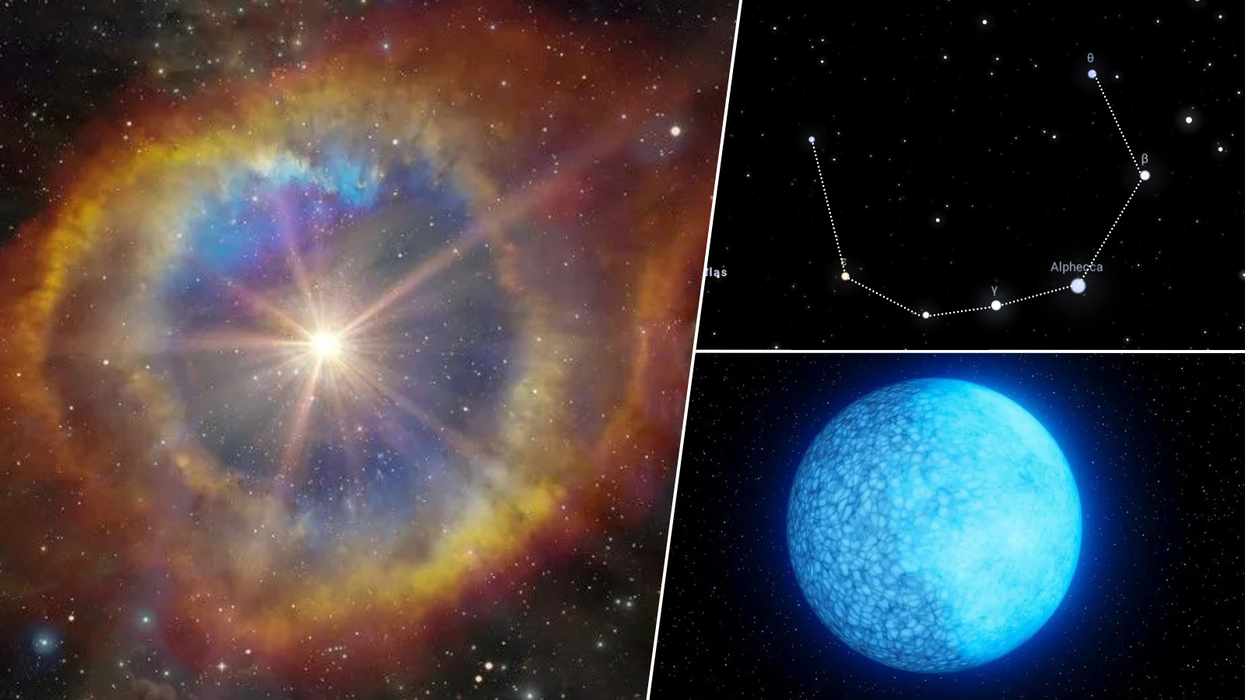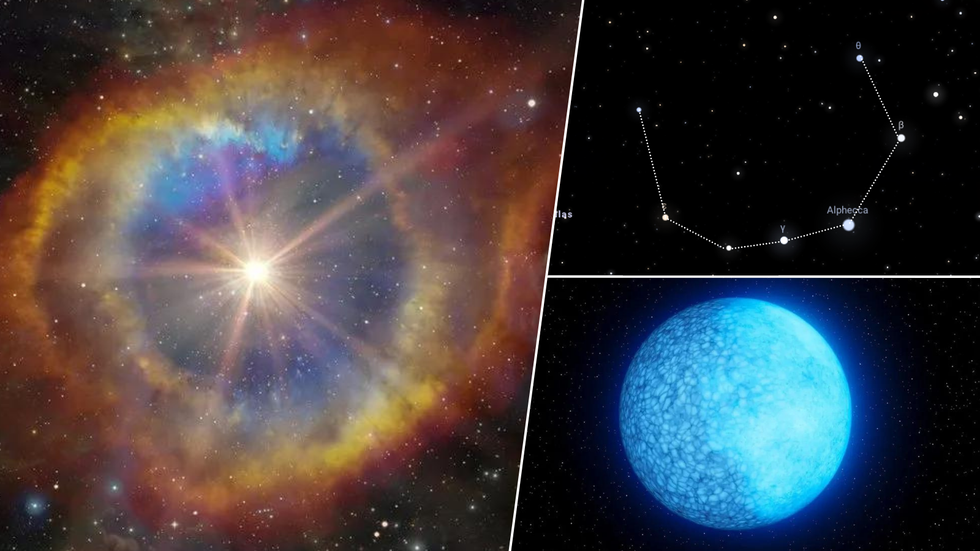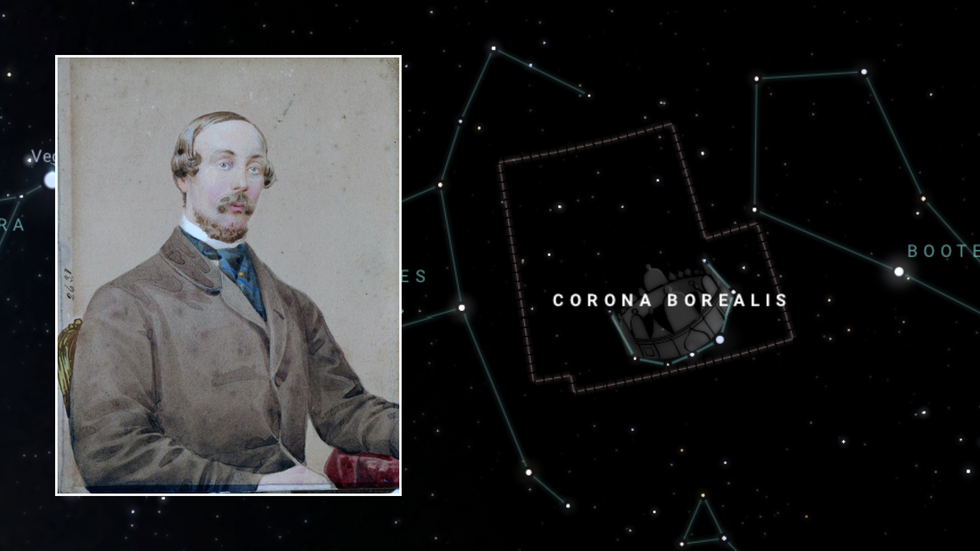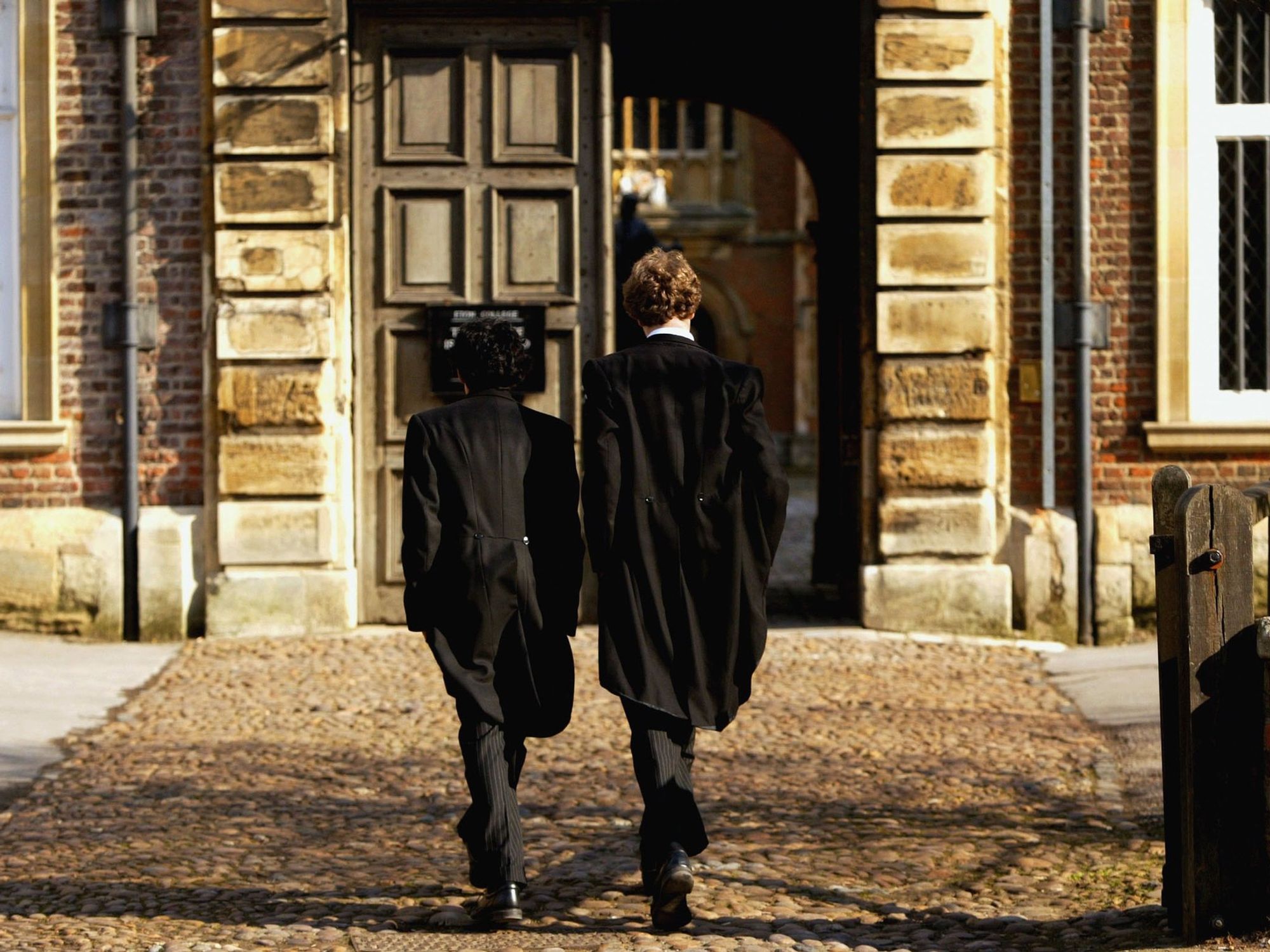New star set to explode over Britain's skies within MONTHS - 'Once in a lifetime viewing opportunity'

The T CrB white dwarf (bottom right) is set to go nova in September this year | Getty/Caltech/Stellarium

The star - visible in skies over the UK - has been seen dropping in brightness in February and March this year, putting astronomers on high alert that it's due to explode
Don't Miss
Most Read
Latest
A new star as bright as the North Star is set to explode into Britain's skies as soon as September this year in a rare burst - its first since 1946.
T Coronae Borealis, or T CrB, as it's known, is a white dwarf "variable star" nestled just to the relative left of the Northern Crown constellation - and it's set to go 'nova' within months.
Until September, T CrB is 100 times too faint for the human eye to detect unaided - but, due to its position in a binary system in which it has been 'sucking in' material from its so-called sister star, it will explode later this year, blazing as brightly as the North Star for a number of days before fading back into the blackness of the night sky.
Dr Mark Hollands, a research fellow at the University of Warwick's Astronomy and Astrophysics group, said: "The ultra-dense white dwarf can steal material from the companion star in a process known as accretion, causing a layer of hydrogen to build up on the white dwarf surface.

The T CrB white dwarf (bottom right) is set to go nova in September this year
|Getty/Caltech/Stellarium
"Once sufficient material has built up, this layer will reach a critical temperature, igniting hydrogen fusion.
"This powerful nuclear detonation ejects the gas from the white dwarf surface in a hot luminous shell.
"What we then see is the system becoming thousands of times brighter and is responsible for the observed nova."
As mentioned, T CrB has exploded before, in 1946, but it was first spotted exploding by Irish astronomer John Birmingham in 1866 - though some researchers have claimed it had been seen in 1217 and in 1787, citing medieval manuscripts and contemporary records.
MORE SPACE NEWS:

John Birmingham first spotted T CrB in 1866
|Public domain/Stellarium
Birmingham - after whom a crater on the Moon is named - had noticed the star growing dimmer in the night sky, which signalled to him the fact a nova was nearby.
Such drops in brightness have also been recorded in February and March this year, putting astronomers on high alert.
Dr Hollands said the dips mean "the fuse has been lit" adding that it is now "a matter of months before we witness the next nova".
When T CrB does go nova, it will become visible even in light-polluted areas.
Nasa has described the impending explosion as "a once-in-a-lifetime viewing opportunity as the nova outburst only occurs about every 80 years".
While Dr Hollands added: "You'll really appreciate the difference when one night in the next few months there is one extra member of the constellation.
"The nova will be visible to the naked eye for a few nights and reach a similar brightness to other stars in the Corona Borealis constellation.
"If you miss that window, it'll still be visible for a few weeks with a good pair of binoculars."










